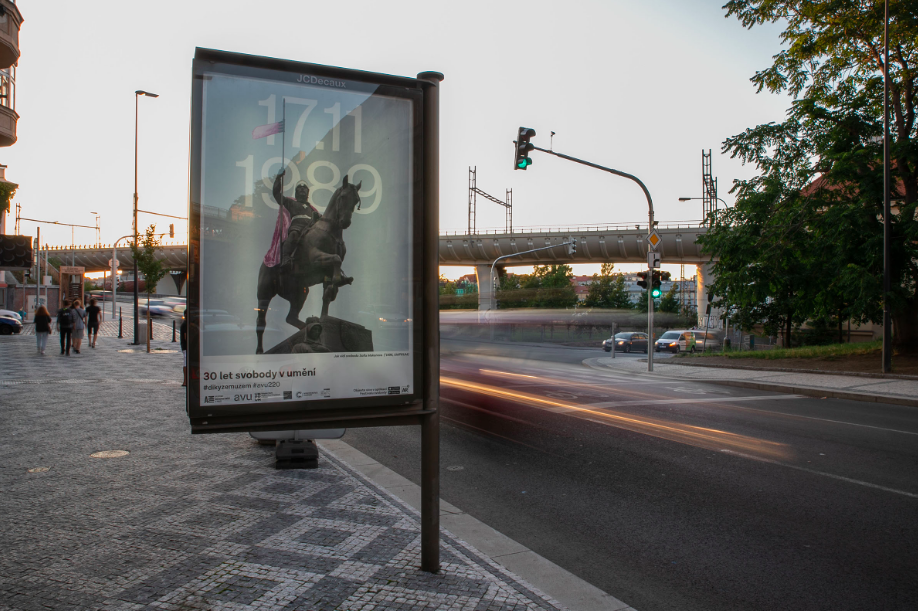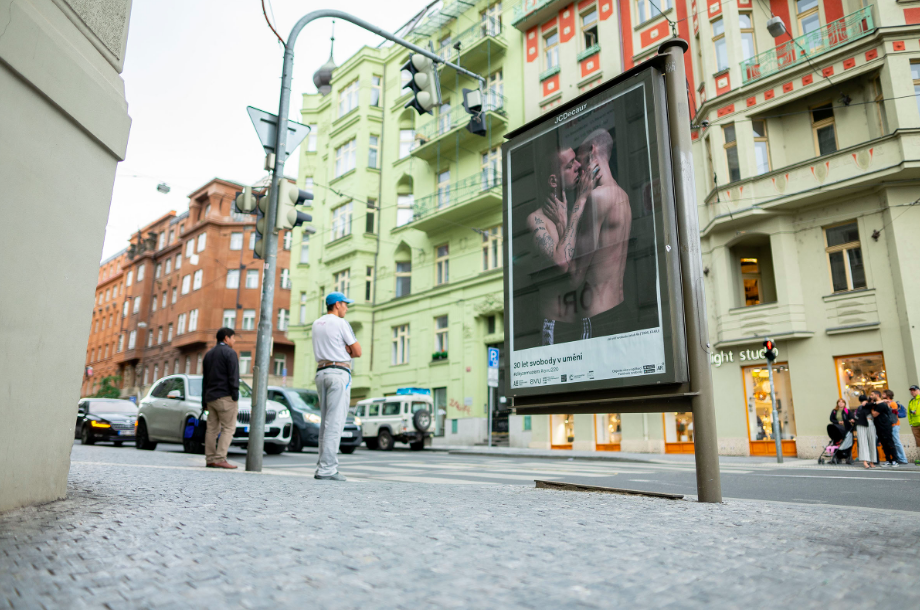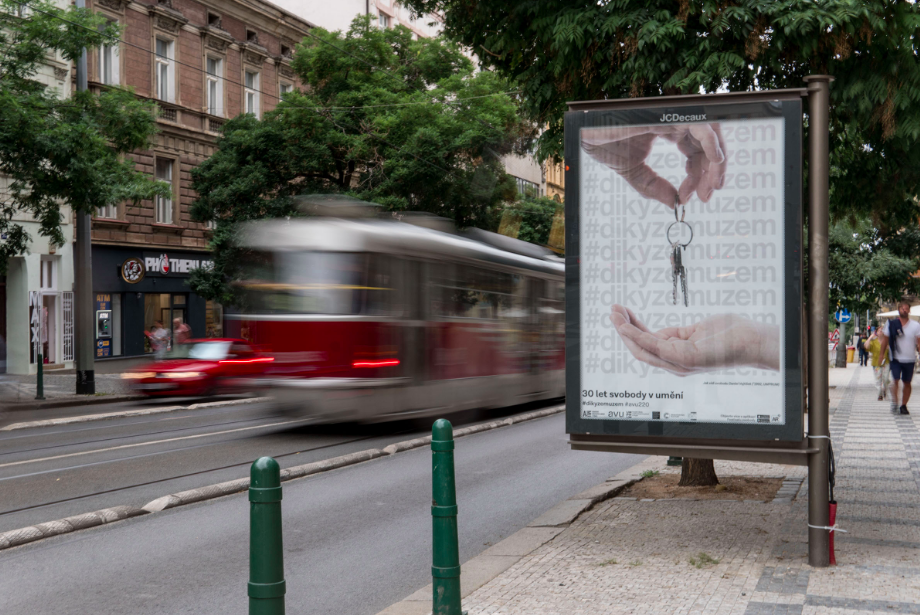Czech police have been put on high alert for the arrival of an estimated 6,000 English supporters for Friday’s Euro 2020 qualifier between England and the Czech Republic.
The fixture has been designated as high risk, with the Czech police ready to deploy an unprecedented number of officers, including English-speaking “anti-conflict units” and, if necessary, anti-riot units.
Prague’s surveillance camera system will be used to monitor fans’ behaviour away from the stadium, a city council spokesperson said.
When England played the Netherlands in a friendly on a Friday night in Amsterdam during March 2018, there were more than 100 arrests and condemnation for the appalling behaviour of the travelling fans.
“I wrote to Uefa asking them to reconsider the Friday night kick-off,” Roberts said. “That’s not something we’ve been able to do. It is harder when you’re dealing with them [Uefa] and, particularly, when you’re playing away. I think it’s unfortunate because you can foresee the risk. We’d much rather prevent a situation developing than try to manage it on the night and regret it afterwards,” said the English national police lead officer for football, Mark Roberts.
Having made a 100% winning start to the Euro 2020 qualifying campaign, England could even secure their place at the tournament this month if they win both games.
The Three Lions will face the Czech Republic, a side they beat 5-0 in March, in Prague on Friday 11 October, with the Bulgaria fixture to follow in Sofia on Monday 14 October – England prevailed 4-0 winners in the reverse game against Bulgaria last month.
The Czechs are second in the table with nine points and three games to play. England, which has a game in hand, tops the group with 12 points.
Bulgaria, Kosovo, and Montenegro are also in the group.
Following Karel’s Gott death on October 1st, Prague’s Petřín Tower will probably lit up in gold during the Signal Festival 2019.
The seventh edition of the festival will offer 18 light installations, six gallery zones and will take place from October 10 to 13.
The Czech public can say farewell Karel Gott in Prague’s Žofín Palace on Friday, October 11, and a commemorative mass will be celebrated for invited guests in St Vitus Cathedral one day later.
“We offered the family to light up the Petřín Tower in gold in memory of Karel Gott, and we are currently waiting for an answer,” said the Prague Mayor Hřib.
Mr. Hřib said that a street or other public area in the city could be named after the Czech singer. “It should be something in connection to music”, he added. The authorities in Prague 5, where Karel Gott lived, have also discussed honouring him in this manner.
The special lighting was not a first-time event. On public holidays and other important dates, the tower has also been lit up in red, white, and blue after the Czech Republic flag.
During the past two years, the tower has been lit in green to celebrate St. Patrick’s Day.
However, not everyone agrees with the lighting. The Prague Conservation Reserve issued a statement asserting that the illumination should only be granted for national holidays and “extraordinarily” important days.
Today marks 83 years since the birth of Václav Havel.
The last Czechoslovak and first Czech President was born in October 1936 into a prominent Prague entrepreneurial and intellectual family. His father, Václav Maria Havel, a successful structural engineer, was the second-generation head of the family building development tradition. His mother, Božena, came from the Vavrečka family, with art-literary and technical talents. She no doubt represented a great role model for her sons, in whom she cultivated a freedom-loving spirit, but also set the bar of aspiration high for them.
As the son of bourgeois parents, Havel was denied easy access to education but managed to finish high school and study at the university level. He found work as a stagehand in a Prague theatrical company in 1959 and soon began writing plays with Ivan Vyskočil.
He was a prominent participant in the liberal reforms of 1968 (known as the Prague Spring), and, after the Soviet clampdown on Czechoslovakia that year, his plays were banned and his passport was confiscated. During the 1970s and ’80s he was repeatedly arrested and served four years in prison (1979–83) for his activities on behalf of human rights in Czechoslovakia. After his release from prison, Havel remained in his homeland.
The key event was the writing of Charter 77. This was essentially a grass-roots initiative on the one hand, criticizing how the ruling party was wielding power, and on the other hand and appeal to uphold the commitments of the International Conference in Helsinki, which prominently featured human rights and became a thorn in the side of the Communist regime. Václav Havel as co-author also played an important role as the press spokesman for this initiative to the outside world. He did not have long to wait for repercussions from the powers-that-be. In 1979, Václav Havel was convicted of subversion and sentenced to four and a half years in prison, unconditionally, having already received a prior conditional sentence of 14 months. After his release, he was under the constant supervision of the secret police, the StB.
Havel’s first solo play, Zahradní slavnost (1963; The Garden Party), typified his work in its absurdist, satirical examination of bureaucratic routines and their dehumanizing effects. Havel continued to write plays steadily until the late 1980s; these works include Ztížená možnost soustředění (1968; The Increased Difficulty of Concentration); Spiklenci (1971; The Conspirators); the three one-act plays Audience (1975), Vernisáž (1975; Private View), and Protest (1978); Largo Desolato (1985); and Zítra to Spustíme (1988; Tomorrow).
When massive antigovernment demonstrations erupted in Prague in November 1989, Havel became the leading figure in the Civic Forum, a new coalition of noncommunist opposition groups pressing for democratic reforms.
In early December the Communist Party capitulated and formed a coalition government with the Civic Forum. As a result of an agreement between the partners in this bloodless “Velvet Revolution,” Havel was elected to the post of interim president of Czechoslovakia on December 29, 1989, and he was re-elected to the presidency on July 1990, becoming the country’s first noncommunist leader since 1948.
As the Czechoslovak union faced dissolution in 1992, Havel, who opposed the division, resigned from office. The following year he was elected president of the new Czech Republic. His political role, however, was limited, as Prime Minister Václav Klaus (1993–97) commanded much of the power. In 1998 Havel was reelected by a narrow margin, and, under his presidency, the Czech Republic joined the North Atlantic Treaty Organization (NATO) in 1999. Barred constitutionally from seeking a third term, he stepped down as president in 2003.
The unsightly and neglected square at the Palmovka metro station is about to change. Prague 8 is preparing several projects to improve this part of Libeň district.
One of the most significant changes will be the sidewalk pavement in the area of the Palmovka intersection, which is being arranged by Prague 8. A notable change will be the removal of elevated concrete surfaces, making the square more open and the whole area clearer. It will be possible to cross it in all directions. There will also be wheelchair accessible modifications.
“The pavement of the area follows the transformation of Palmovka, which we started in the spring of this year. We want to turn the unused space into a high-quality urban place that will be a meeting point and will allow different cultural events or markets, for example,” says Tomáš Hřebík, Prague 8 Councilor of Strategic Development.
The pavement surface will be a mosaic with the same pattern as the new part of Na Žertvách street. The surface in the corners of the intersection will have grass to absorb rainwater and will require benches to sit. A cafe will be built in one of the corners.
It is not possible to plant full-grown trees in the area, as the ceiling of the metro station is just below the intersection. That’s why Prague 8 had UNIT architects designing a unique structure to allow them to hang climbing plants directly on the poles of the Prague Public Transport Company. These plants will add more foliage and will also be dismountable.
“Unsightly green areas will be replaced by modern greenery, which will cool the place and also contribute to the aesthetic aspect of the entire space,” adds Petr Pelc, Prague 8’s representative for the Palmovka area. Traffic signs will also change.
If everything goes well, renovations will take place next year. The project has to be financed by the municipality cooperating with Prague 8.
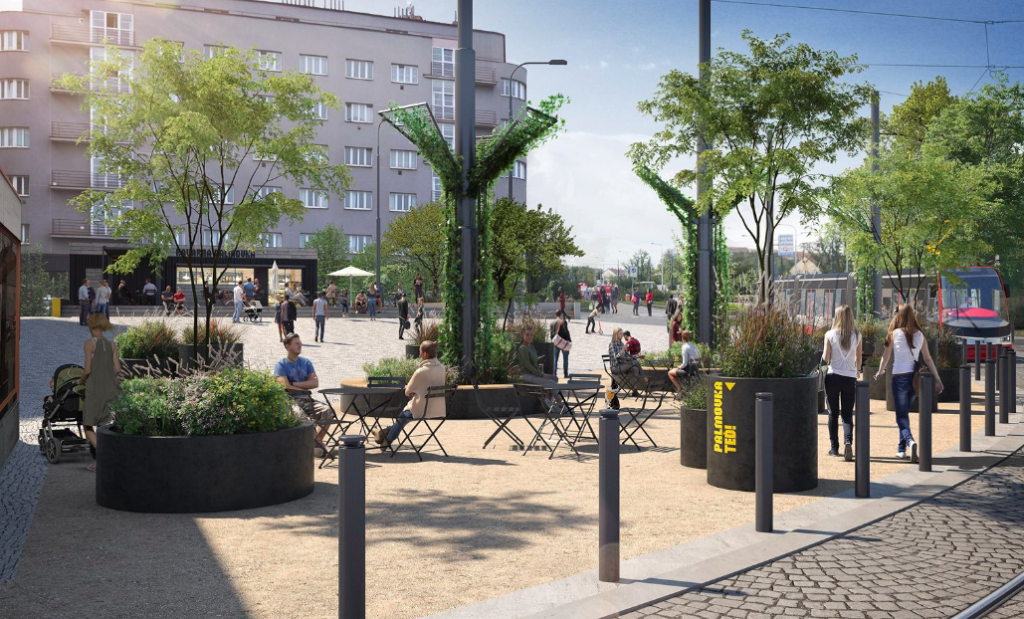
The smartest city in the world is Singapore, the inaugural IMD Smart City Index showed.
Published by Swiss business school IMD and the Singapore University of Technology and Design, the IMD Smart City Index 2019 (SCI) ranked 102 cities worldwide, uniquely focused on how citizens perceive the scope and impact of efforts to make their cities ‘smart’, balancing “economic and technological aspects” with “humane dimensions”.
The top-10 smartest cities in 2019 are: Singapore (1st), Zurich (2nd), Oslo (3rd), Geneva (4th), Copenhagen (5th), Auckland (6th), Taipei City (7th), Helsinki (8th), Bilbao (9th) and Dusseldorf (10th).
The main two main pillars considered are structures, which refer to the city’s existing infrastructure; and technology, which refers to the technological provisions and services available to the residents.
Under each pillar, the survey also looked at the categories of health and safety, mobility, activities, opportunities, and governance – each of which were in turn broken down into smaller indicators.
“Smart cities are becoming magnets for investment, talent, and trade. Yet, a significant part of the efforts and energy spent seem to be disconnected from the long-term aspirations of citizens. Without citizen’s support and engagement, smart cities may not be sustainable,” said Bruno Lanvin, President of the IMD’s Smart City Observatory at the IMD World Competitiveness Center.
The index also revealed that economic performance of smart cities is deeply influenced by their context. For instance, large urban centres such as San Francisco (12th) or London (20th) make the top-20 of the IMD Smart Cities Index 2019. But, cities of smaller size, such as Bilbao (9th) – with populations below 500,000 – ranked remarkably high.
What’s more, quality of life (including environment, safety, access to health and education services, but also mobility and social interaction) seem to be more and more prominent aspirations for ‘smart cities’ worldwide.
Well, you have to be lucky to visit this theatre and see the play performed in English. However, it is my most favorite cultural gem of Czech Republic – Divadlo Jary Cimrmana (Theatre of Jara Cimrman) and I cannot keep this a secret from you.
Two years ago a group of English-speaking theatre enthusiasts took it upon themselves to translate the genius of the most famous Czech playwright, sportsman, engineer, composer, detective, inventor, and self-taught gynecologist Jara Cimrman into English and formed the Cimrman English Theatre.
If you ask any Czech about Jara Cimrman, you will hear a lot of stories and you would be assured that he is a national hero. If you ask any foreigner, you will probably realize that nobody outside of this country has ever heard of Jara Cimrman.
Maybe this is because of the fact that he is only a fictional person (nevertheless, he was nominated to the post of Czech president). Seeing the play in this theater (written by Jara Cimrman) will illustrate the typically Czech sense of humor.
So, if you are reading this during your visit to Prague, it is probably too late to get the tickets. But if you are (unlike me) planning your visit ahead of time, buy the tickets online and do not miss this unique experience!
The tickets for the performance on 7th and 25th of October are still available…
Author: Michal Lebl. You can find the original article here
Spotted by Locals Prague is a blog (and iPhone & Android app) by locals who live & love their city.
The last farewell with late Czech pop star Karel Gott will have the form of a funeral with state honours, not of a usual state funeral, Prime Minister Andrej Babis told journalists yesterday.
Czech cabinet tasked ministries and other government offices to lower national flags to half-mast.
Babis said he wanted to tell the public where and when Gott will be buried. Culture Minister Lubomir Zaoralek said the government was waiting for the position of Gott’s family.
“I hope to announce to the public the date of Karel Gott’s funeral on [Thursday] afternoon and the location where people can pay their respects, as well as where the official farewell will take place. It will not be a state funeral, but one with state honours…I discussed this matter with his family yesterday and today a special team will settle the details.”
Gott died late Tuesday at home in Prague after battling leukaemia for a period of time.
He released some 300 albums since the 1960s and sold tens of millions of copies worldwide, was regarded as the most popular pop singer in the Czech Republic.
The richest Czech remains the owner of PPF investment group, Petr Kellner, with an estimated property worth 350 billion crowns.
Prime Minister and ANO CEO, Andrej Babiš, fell from second to fourth, his assets decreased by five billion crowns compared to last year. Babiš shifted his position with real estate investor, Radovan Vítek, who increased on 15 billion, bringing him to the second place.
The third is the owner of KKCG, Karel Komárek, who controls Sazka. The ranking was published today on Forbes website. The total assets of entrepreneurs who have worked their way up to the 100th ranking sum 1.2 trillion crowns.
The stakeholder Zdeněk Bakala dropped out of the top ten and was replaced by financier Jiří Šmejc, who is a minority shareholder of Home Credit installment and assets on the Croatian SuperSport. This year’s Forbes rankings have increased by 20 new names. A significant part of them are businessmen who started from scratch and at the beginning of their assets stood modern technology.
Among them Martin Hájek, the chief and owner of Livesport, which provides the fastest sports results worldwide. Forbes estimated his assets at 8.5 billion crowns and ranked him 24th.
Oliver Dlouhý, the founder of Kiwi.com, a ticket search website with assets of CZK 1.5 billion, also entered the ranking for the first time, as well as the founder of the Czech web hosting and CDN service Zdeněk Cendra (CZK 1.8 billion) or founder of the ePojištění.cz, Jan Barta (CZK 1.5 billion).
According to Forbes, Babiš’s equity is predominantly based on the Agrofert holding, and he has been falling in the ranking for the second year due to increasingly poor business results, especially chemical plants producing industrial fertilizers. “Agrofert is in two trust funds, but Andrej Babiš remains a recipient of the benefits resulting from them, which is why we still rank him in the ranking,” Forbes said.
According to Forbes, the richest woman in the Czech Republic is Jitka Cechlová Komárková, who, with a property worth CZK 4.8 billion, took the 50th place. Most of her assets were acquired in the past when dividing the KKCG holding of the Komárek family. The second richest Czech woman is the founder of SIKO, Jaroslava Valová, with three billion and in 75th place, and co-owner of the transport company ICOM, Kateřina Kratochvílová, in the 76th place.
Ranking of the richest Czechs by Forbes magazine (TOP 10):
| Name | Billions of CZK (2018) | Billions of CZK (2019) | |
| 1. | Petr Kellner | 350 | 310 |
| 2. | Radovan Vítek | 75 | 60 |
| 3. | Karel Komárek | 71 | 67 |
| 4. | Andrej Babiš | 70 | 75 |
| 5. | Daniel Křetínský | 66 | 59 |
| 6. | Pavel Baudiš | 38 | 27 |
| 7. | Pavel Tykač | 32 | 31 |
| 8. | Marek Dospiva | 23 | 22 |
| 9. | Eduard Kučera | 22,5 | 19 |
| 10. | Jiří Šmejc | 20 | 17 |
The death of the famous singer Karel Gott has affected Prague, where the artist – popular across generations – left a significant mark and spent most of his life here.
The city councilors, therefore, have decided to start looking for a place that would be named after Karel Gott. The task of choosing a suitable place to commemorate the deceased singer has been given a topography commission of the Prague City Hall. The specificity of the place—as in square, street, park—is not yet clear.
When the public heard the overwhelming news Wednesday morning that the severely-ill, 80-year-old Gott had died, surrounded by family, around Tuesday midnight, the whole nation expressed regret. Gott was remembered almost all over the Czech Republic. There would be few people who didn’t feel sad for a moment. Politicians also competed in statements about Gott’s death.
“Karel Gott was also nicknamed the Golden Voice of Prague. I will surely suggest that Prague greatly appreciates the Master’s extraordinary contribution to our culture. My condolences to [his] family and loved ones,” wrote Mayor Zdeněk Hřib (Pirates) on the Facebook page.
Hřib then told ČTK that he would propose to the City Council and coalition partners from Prague himself and the United Forces (TOP 09, STAN, KDU-ČSL) that Prague proceed to some form of a Gott award. To the mayor, for example, it is possible to name the public space after the singer, but the matter will still have to be discussed. The opposition movement leader ANO and MP Patrik Nacher also agree with this intention.
Prime Minister Andrej Babiš, together with the family of Karel Gott, will propose to the government to organize a state funeral in St. Vitus Cathedral. The Prague City Hall is also considering an award for Gott.
“I offer my condolences to his family. Prague appreciates the Master extraordinary contribution to culture. I will entrust the local commission to select a dignified place in the capital that will be, in the future, [a remembrance of] his name, ”said Mayor Zdeněk Hřib.
The mayor has not specified whether the renamed place will be a street or square. Suggestions for a suited place in Prague can be written to us for discussion.
With a little changing, it may be possible to rename Karlovo náměstí or the metro station of the same name in remembrance of Karel Gott. Passengers could thus see the message: “Next station Karlovo (Gottovo) náměstí.” But of course, this option is not very likely. Who knows if the name of Nad Bertramkou Street will change, where the late singer had a villa and tours, as well as the main Germany and Austria fan-base?
In addition to removing posters and signs, Prague public lighting maintainers have another task: removing the key boxes from the street lamps, which are placed there by the owners of apartments offered via Airbnb.
If the owner wants their box back, they must pay 1500 crowns. It is not surprising that no one has applied yet. Moreover, the value of the box itself is much lower.
“We will remove the illegally placed key boxes without damaging the box itself. Owners can contact our company where they will issue the boxes after paying the costs incurred by our company for removal and storage,” said Tomáš Novotný, Vice President of Technology of the City of Prague.
According to sales director Filip Brückner, however, boxes are not yet enough to require special warehouses or shelves for storage, and companies would incur additional costs. “To remove, it is necessary to leave the service vehicle, and it costs 1500 crowns. But we do not charge storage yet,” he said, saying that none of the owners have picked up their boxes yet.
The company also published a call for people who come across pillar boxes to report the case to the toll-free line at 800 40 40 60. “It’s the use of a strange thing, for the lamps are owned by the city. At the same time, it is unjust enrichment because the city leases masts for advertising accessories,” Brückner added. In some cases, the boxes can also cause complications when handling the lamps; for example, they can make the service hole unavailable, iDNES.cz pointed out earlier.
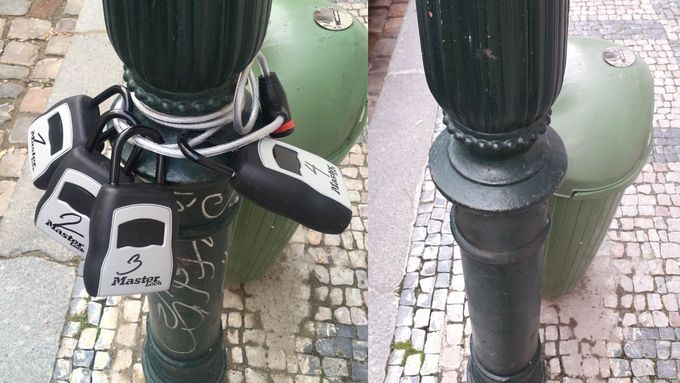
Box keys can bring more revenue
Boxes cost several hundred crowns and are primarily used by providers of shared housing, such as Airbnb. Thanks to the keys stored in the boxes, guests can stay at any time, and the hosts do not have to be physically present when handing over the keys. It is also an option for them to offer self-service accommodation
Boxes cost several hundred crowns and are primarily used by providers of shared housing, such as Airbnb. Thanks to the keys stored in the boxes, guests can stay at any time, and the hosts do not have to be physically present when handing over the keys.
It is also an option for them to offer a self-service accommodation process, allowing guests to access it. For example, guests can use a smart lock (fingerprint or mobile phone unlock), a code lock, a porter, or the locker in which they store the keys.
Self-service accommodation is also one of the conditions for a host to be classified as a business-friendly accommodation and to attract more potential clients.
Towards the end of last year, there were references regarding the fact that Tesla was planning to launch its first centre in the Czech Republic and was looking for employees.
A few months later this information was confirmed, and in the first half of this year, the service centre in Prague’s Vysočany officially opened as part of the Advantage Cars complex.
It was the first hint to suggest the opening of an official dealership. Despite the service centre in the Czech Republic, customers still had to travel abroad for their cars. Nevertheless, Elona Muska announced the opening of the first Prague sales point, again in Prague 9 – Vysočany, specifically at Freyova 95/10.

The opening is scheduled to happen in a few days, specifically on October 4th. The same day and the day after there will be test drives and a general presentation of the diverse possibilities for Tesla customers in the Czech Republic. Tesla announced this on its website and in the newsletter they sent to customers.
There will be more expensive cars like Models X and S, as well as the most affordable one, Model 3. At the same time, cars will receive an official Czech price for the first time. The opening of the store was confirmed by an e-mail from the official representation:
We are pleased to invite you to a test drive in our newly opened Tesla store in Prague.
During the meeting, you will have the opportunity to become familiar with the standard safety and comfort features of its Autopilot, learn how to charge Tesla at home or on the go, and see how the electric car can fit without any trouble into your lifestyle.
If you are interested, you can book a test drive with Model S, Model X or Model 3.
Prague residents and visitors can now observe the artworks made by students from three art schools, expressing their view on the 30 years of freedom of Czechoslovakia and the Czech Republic.
The exhibited works originated from a competition organised by the AVU, AMU and UMPRUM schools together with Díky, že můžem (Thanks That We Can Association).
Thanks to this project, dozens of young artists had the opportunity to show their work outside the gallery. “Most of the contemporary art goes to gallery spaces; artistic use of urban furniture is an exception. In addition to the presentation of selected works, the exhibition also raises the question of art in public spaces, which is now in the vast majority provided by commercial communications. Also, where else should freedom be celebrated other than in the streets,” explains Oskar Rejchrt, a member of the Díky, že můžem, which is preparing this year’s sixth annual celebration on November 17th at Národní třída, named Korzo Národní.
The extraordinary presentation is emphasised by augmented reality, right in the viewers’ mobile phones and after downloading Synetech’s Freedom Festival app.
Forty students from different schools and faculties entered the competition called 30 Years of Freedom in Art. The designs, therefore, included graphics and photographs, abstractions and works of a specific nature. The feelings that the works evoke are also diverse – some underline the reasons for the celebrations, others evaluate the thirty years since the fall of the communist regime rather critically.
“I am glad that we are living at a time where we can express ourselves openly, and I know how important it is to draw attention to this constantly. The renowned student competition across three Prague art colleges is a common gesture and a way of commemorating the anniversary and legacy of the revolutionary year 1989 in the form of artistic concepts situated in public spaces,” adds Doc. MgA. Tomáš Vaněk, rector of the Academy of Fine Arts, that this year celebrates 220 years since its foundation.
The winning student work of Dana Vojtíška, Sofia Makanová, Lucie Michnová, Kateřina Kuchtová, Dana Kinská, Jakub Ra, Jana Kvíza, Martina Kyjovská and Jana Hladíká will be displayed on advertising spaces at one of the most frequented streets of Prague, Na Příkopě, and Václav Havel Airport from September 15th to October 15th.
WHEN: 15. 9. – 15. 10. 2019
WHERE: Na Příkopě street and Václav Havel Airport
